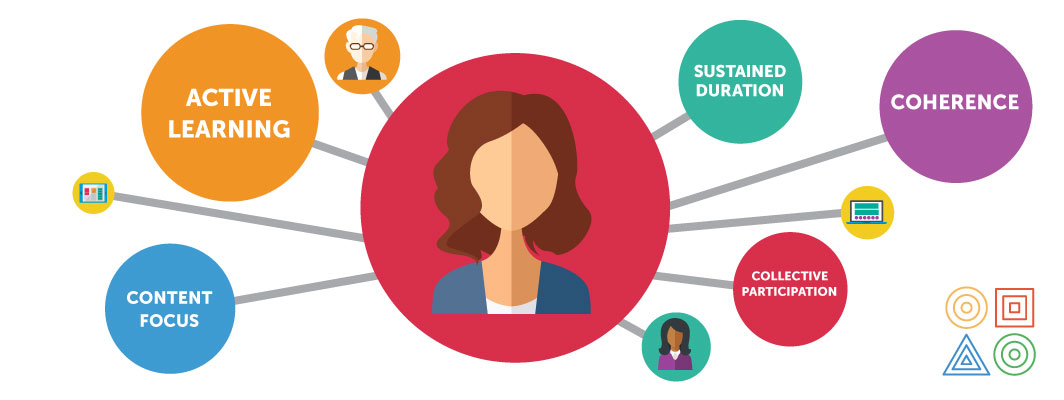
Instructional coaching is a form of professional development (PD) in which an accomplished teacher works with teachers in one-on-one settings to provide guidance and focus on practical strategies to increase student engagement and learning. Like in sports, its goal is to improve individual and team performance.
Effective PD includes five key attributes: Content focus, active learning, sustained duration, collective participation and coherence. The DLP instructional coaching program hits on all five elements, providing a powerful tool for improving teacher performance. Here’s how:
Content Focus
Personalized learning—a hot buzz phrase for the 2018-19 school year—occurs when teaching is tailored to meet each student’s unique needs and goals. So why, then, shouldn’t teacher learning also be personalized? Rather than sitting in a PD seminar all day, instructional coaching provides support relevant to the teacher’s specific classroom and content.
“If you do a one-size-fits-all model for all teachers, that’s not necessarily going to address their strengths or weaknesses as a teacher,” one participating teacher said. “The one-on-one aspect is, I think, the most important part, that you can address each teacher individually based on their strengths and their areas of growth.”
Active Learning
DLP teachers meet with their coach to set goals directly related to the needs of their classroom. They identify a particular challenge to focus on, then brainstorm strategies to tackle that challenge. Throughout an eight-week coaching cycle, the coach provides support as the teacher implements selected strategies, and together they reflect on the experience and discuss next steps. By playing an active role in their own professional development and by reflecting on their own level of success, teachers develop and expand their repertoire with the support of their coach.
Sustained Duration
Daylong “one-shot” PD workshops where an expert talks to a room full of teachers may be interesting, but have shown to have little to no effect on classroom practice. However, PD that engages teachers over an extended period of time supports continuous improvement with their instruction. The DLP’s eight-week cycle allows sufficient time for experimentation and reflection. In the pilot year, teachers received an average of 19 or more hours of coaching over the course of the school year.
Collective Participation
When teachers have the opportunity to share ideas, they become advocates for their own learning. When DLP teachers learned something with their coach, they were eager to share with other teachers—those participating in the DLP, as well as those who weren’t—so the reach of the instructional coaching extended well beyond the direct DLP group. Further, the coaches in the program were connected with mentors and with each other, to share and advance their coaching practice.
Coherence
Finally, PD should be consistent with the goals of the school or district and with the needs of each teacher’s students. If the instructional coach is a veteran educator with experience teaching within that school, this familiarity tends to work in their favor and improve the relevance of the experience.
The first year of the Dynamic Learning Project has shown that instructional coaching has led not only to more powerful teaching, but greater job satisfaction among participating teachers. As one teacher said, “After close to 20 years of teaching (…) having a coach and having the ability to do these different types of activities has re-energized my love for it.”
Teachers and schools who participated in the DLP believed that the instructional coaching provided an engaging and impactful PD experience. What they learned holds promise to help close the digital use divide and improve student outcomes as students become more engaged through powerful use of technology.
“[The students] have ownership of what they’re doing and what they’re learning instead of me just handing them things,” said one DLP teacher.
Said another: “I saw seventh graders turn into lifelong learners.”